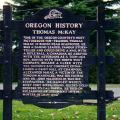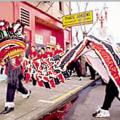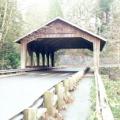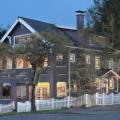One of the Oregon Country's most picturesque fur-traders, Thomas McKay, is buried near Scappoose. He was a daring leader, famous storyteller and could drive a nail with a rifle ball.
Regions: Greater Portland
Deer Island in the Columbia was named by the Lewis and Clark Expedition which stopped to dine here November 5, 1805 on its way down river.
Location:
From I-205 exit Foster Road east. Turn south on SE 134 to Deardorf Road and travel for 1/2 mile. Cedar Crossing is on Deardorf Road over Johnson Creek.
Nestled behind the Fred Meyer store in Canby you will find a jewel of a park that captures the heritage of the area, as a small industrial park grows around it.
Welcome to the Fulton House Bed & Breakfast…in the heart of Portland, Oregon.
Step back in time to charming Old England at this restored handsome brick Georgian Colonial featured in Better Homes and Garden magazine. Relax on the sun deck or in the gazebo.
Amble through parks and historic streets in Oregon's largest city
The Pumpkin Patch on the island of Sauvie in Portland, Oregon celebrated its 16th season in 2014.









